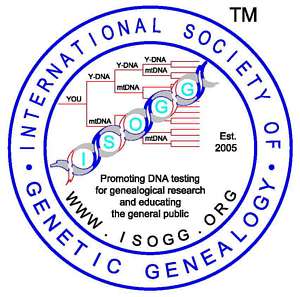Back to Y-DNA Tree Trunk
Back to SNP Index
Back to Papers/Presentations Cited
Back to Glossary
Copyright 2011. International Society of Genetic Genealogy. All Rights Reserved.

| LINKS: Main Page Y-DNA Tree Trunk SNP Index Papers/Presentations Cited Glossary |
Corrections/Additions made since 1 January 2011:
| Back to Main Page Back to Y-DNA Tree Trunk Back to SNP Index Back to Papers/Presentations Cited Back to Glossary Copyright 2011. International Society of Genetic Genealogy. All Rights Reserved. |

|